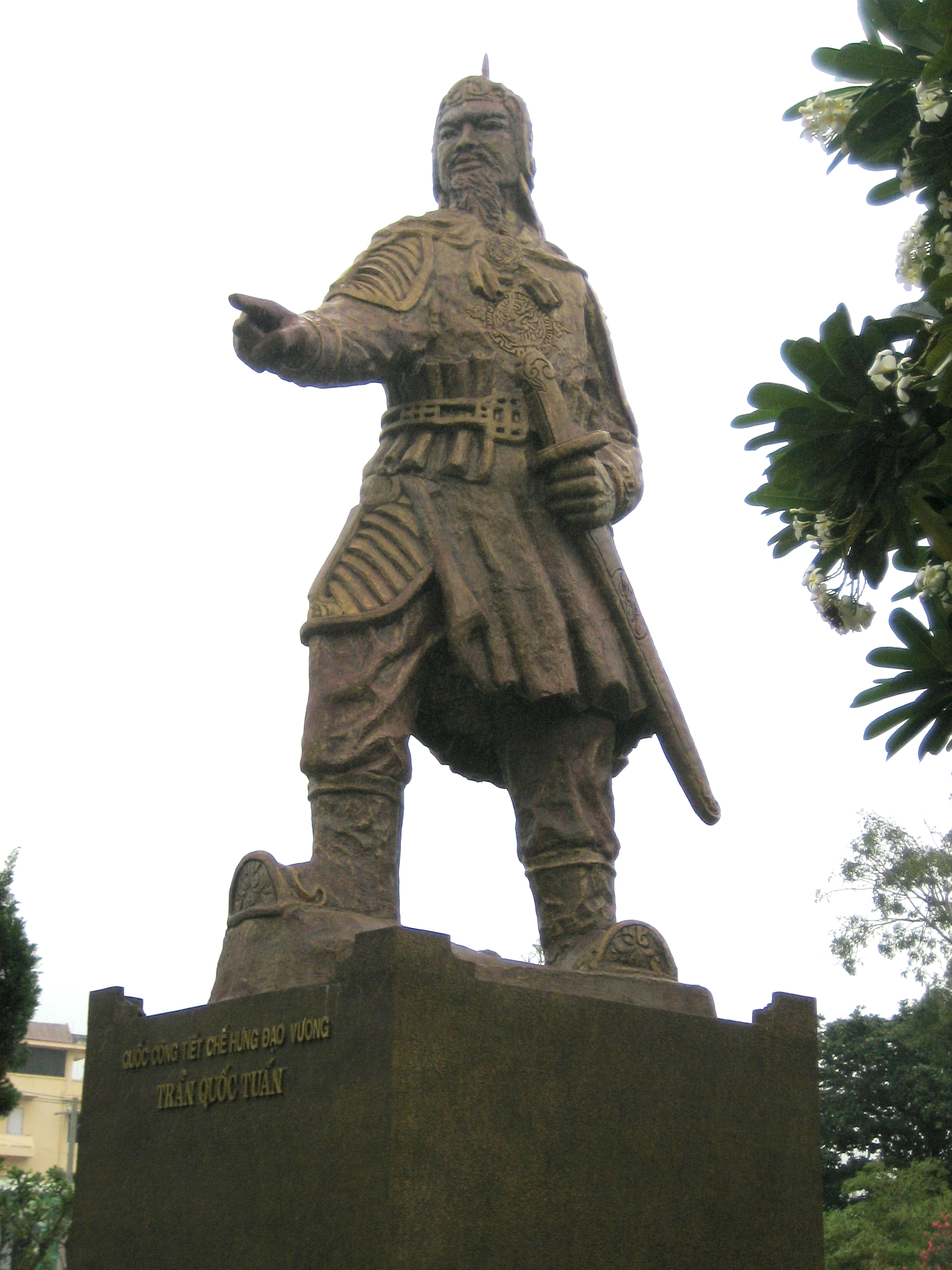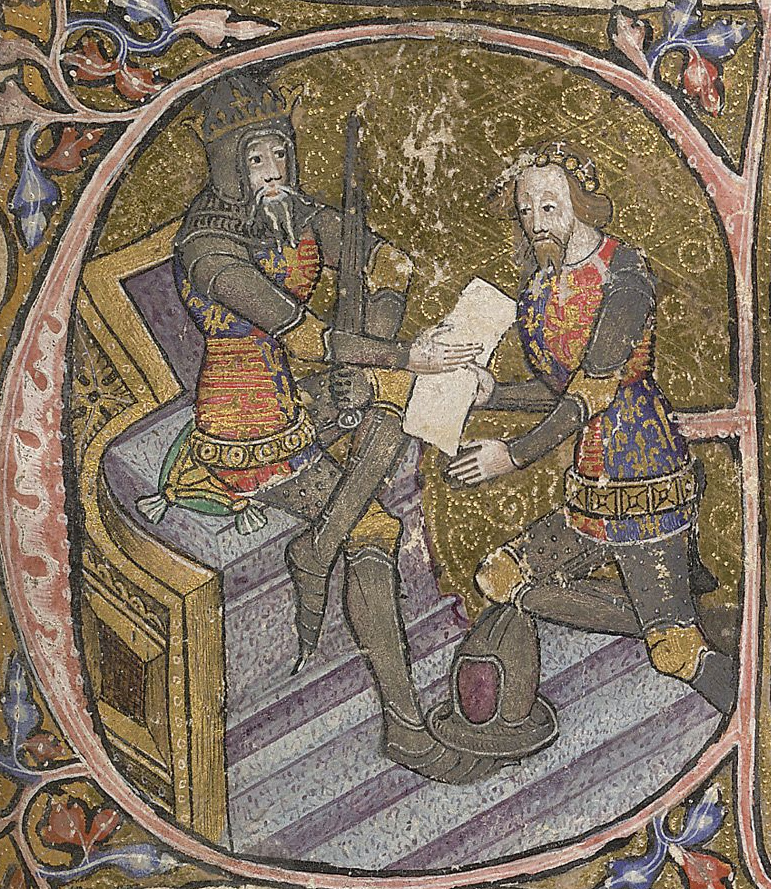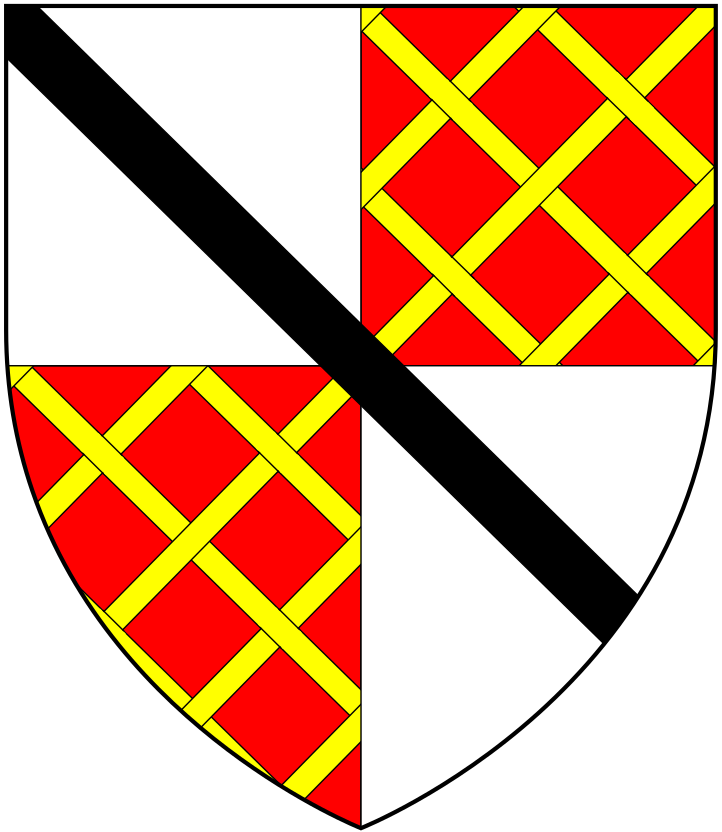|
1400
Year 1400 ( MCD) was a leap year starting on Thursday of the Julian calendar. The year 1400 was not a leap year in the Proleptic Gregorian calendar, it was a common year starting on Wednesday. Events January–March * January 4 – The Epiphany Rising begins in England against King Henry IV by nobles planning to restore King Richard II to the throne, and is quickly crushed. Baron Lumley dies after attempting to seize Cirencester. The Earl of Salisbury and the Earl of Kent are captured and beheaded on January 7. Sir Thomas Blount is hanged, drawn and quartered at Oxford on January 12. Thomas le Despenser, 1st Earl of Gloucester is captured and executed by a mob in Bristol on January 13. The Earl of Huntingdon is beheaded at Pleshey on January 16. * February 14 – The deposed Richard II of England dies by means unknown in Pontefract Castle. It is likely that King Henry IV ordered his death by starvation, to prevent further uprisings. * February ... [...More Info...] [...Related Items...] OR: [Wikipedia] [Google] [Baidu] |
Trần Dynasty
The Trần dynasty (Vietnamese language, Vietnamese: Nhà Trần, chữ Nôm: 茹陳; Vietnamese language, Vietnamese: triều Trần, chữ Hán: [wikt:朝]wikt:陳, 朝wikt:陳, 陳), officially Đại Việt (Chữ Hán: 大越), was a List of Vietnamese dynasties, Vietnamese dynasty that ruled from 1225 to 1400. The dynasty was founded when emperor Trần Thái Tông ascended to the throne after his uncle Trần Thủ Độ orchestrated the overthrow of the Lý dynasty. The Trần dynasty defeated three Mongol invasions of Vietnam, Mongol invasions, most notably during the decisive Battle of Bạch Đằng (1288), Battle of Bạch Đằng River in 1288. The final emperor of the dynasty was Trần Thiếu Đế, Thiếu Đế, who was forced to abdicate the throne in 1400, at the age of five years old in favor of his maternal grandfather, Hồ Quý Ly. The Trần improved Chinese gunpowder, enabling them to Nam tiến, expand southward to defeat and vassalize the Champa. The ... [...More Info...] [...Related Items...] OR: [Wikipedia] [Google] [Baidu] |
Hồ Dynasty
The Hồ dynasty (Vietnamese: , chữ Nôm: 茹胡; Vietnamese: ''triều'' ''Hồ'', chữ Hán: wikt:朝, 朝wikt:胡, 胡), officially Đại Ngu (; chữ Hán: 大虞), was a short-lived List of Vietnamese dynasties, Vietnamese dynasty consisting of the reigns of two monarchs, Hồ Quý Ly and his second son, Hồ Hán Thương. The practice of bequeathing the throne to a designated son (not simply passing it on to the eldest) was similar to what had happened in the previous Trần dynasty and was meant to avoid sibling rivalry. Hồ Quý Ly's eldest son, Hồ Nguyên Trừng, played his part as the dynasty's military general. In 2011, UNESCO declared the Citadel of the Hồ Dynasty in Thanh Hóa Province a world heritage site. The Hồ dynasty was conquered by the Chinese Ming dynasty in 1407. Hồ Quý Ly (c. 1335 – c. 1407) Origin and background The Hu (surname), Hồ/Hú family originated around modern-day Zhejiang province in the Southern Tang, Southern Tang dynasty ... [...More Info...] [...Related Items...] OR: [Wikipedia] [Google] [Baidu] |
Đại Việt
Đại Việt (, ; literally Great Việt), was a Vietnamese monarchy in eastern Mainland Southeast Asia from the 10th century AD to the early 19th century, centered around the region of present-day Hanoi. Its early name, Đại Cồ Việt,(chữ Hán: 大瞿越) was established in 968 by the ruler Đinh Bộ Lĩnh after he ended the Anarchy of the 12 Warlords, until the beginning of the reign of Lý Thánh Tông (r. 1054–1072), the third emperor of the Lý dynasty. Đại Việt lasted until the reign of Gia Long (r. 1802–1820), the first emperor of the Nguyễn dynasty, when the name was changed to Việt Nam in 1804. Under rule of Emperor at home, king abroad, bilateral diplomacy with Imperial China, it was known as Principality of Giao Chỉ (chữ Hán: 交趾) (975–1164) and Kingdom of Annam (chữ Hán: 安南) (1164–1804) when Emperor Xiaozong of Song upgraded Đại Việt's status from principality to kingdom. Đại Việt's history was divided into the rule ... [...More Info...] [...Related Items...] OR: [Wikipedia] [Google] [Baidu] |
Epiphany Rising
The Epiphany Rising was a failed rebellion against King Henry IV of England in early January 1400. Background Richard II rewarded those who had supported him against Gloucester and the Lords Appellant with a plethora of new titles. Upon the usurpation and accession of King Henry IV in 1399, many of those titles were placed under attainder, due to the complicity of their holders in the murder of the Duke of Gloucester. Conspiracy The ringleaders of the conspiracy were John Montagu, 3rd Earl of Salisbury, John Holland, 1st Earl of Huntingdon (formerly Duke of Exeter and husband of Henry IV's sister Elizabeth) and half-brother to Richard II, Thomas Holland, 3rd Earl of Kent (formerly Duke of Surrey), and Thomas le Despenser, 4th Baron le Despencer (formerly Earl of Gloucester). Other members included Edward of Norwich, 1st Earl of Rutland (formerly Duke of Aumale), Ralph Lumley, 1st Baron Lumley, Sir Thomas Blount and Sir Bernard Brocas. They met on 17 December 1399 at th ... [...More Info...] [...Related Items...] OR: [Wikipedia] [Google] [Baidu] |
Richard II Of England
Richard II (6 January 1367 – ), also known as Richard of Bordeaux, was King of England from 1377 until he was deposed in 1399. He was the son of Edward the Black Prince, Edward, Prince of Wales (later known as the Black Prince), and Joan, Countess of Kent. Richard's father died in 1376, leaving Richard as List of heirs to the English throne, heir apparent to his grandfather, King Edward III; upon the latter's death, the 10-year-old Richard succeeded to the throne. During Richard's first years as king, government was in the hands of a series of regency councils, influenced by Richard's uncles John of Gaunt and Thomas of Woodstock. England at that time faced various problems, most notably the Hundred Years' War. A major challenge of the reign was the Peasants' Revolt in 1381, and the young king played a central part in the successful suppression of this crisis. Less warlike than either his father or grandfather, he sought to bring an end to the Hundred Years' War. A firm ... [...More Info...] [...Related Items...] OR: [Wikipedia] [Google] [Baidu] |
John Holland, 1st Duke Of Exeter
John Holland, 1st Duke of Exeter, 1st Earl of Huntingdon ( 1352 – 16 January 1400) of Dartington Hall in Devon, was a half-brother of King Richard II (1377–1399), to whom he remained strongly loyal. He is primarily remembered for being suspected of assisting in the downfall of King Richard's uncle Thomas of Woodstock, 1st Duke of Gloucester (1355–1397) (youngest son of King Edward III) and then for conspiring against King Richard's first cousin and eventual deposer, Henry Bolingbroke, later King Henry IV of England, Henry IV (1399–1413). Origins John was the third son of Thomas Holland, 1st Earl of Kent, Thomas Holland by his wife Joan of Kent, "The Fair Maid of Kent". Joan was daughter of Edmund of Woodstock, 1st Earl of Kent, a son of King Edward I (1272–1307), and Thomas would be made Earl of Kent, in what is considered a new creation, as husband of Joan, in whom the former Earldom was vested as eventual heiress of Edmund of Woodstock. Joan later married Edward the ... [...More Info...] [...Related Items...] OR: [Wikipedia] [Google] [Baidu] |
Hồ Quý Ly
Hồ Quý Ly ( vi-hantu, 胡季犛, 1336 – 1407?) ruled Đại Ngu (Vietnam) from 1400 to 1401 as the founding emperor of the short-lived Hồ dynasty. Quý Ly rose from a post as an official served the court of the ruling Trần dynasty and a military general fought against the Cham forces during the Cham–Vietnamese War (1367–1390). After his military defeat in the Ming Conquest of Dai Ngu (1406–1407), he and his son were captured as prisoners and were exiled to China, while the Dai Viet Empire became the thirteenth province of Ming Empire. Biography Early career Hồ Quý Ly was born in 1336 at Đại Lại village, Vĩnh Ninh district, Ái Châu, Thanh Đô town with aristocracy's standing. His birth name was Lê Quý Ly (黎季犛), courtesy name Lý Nguyên (理元) or Nhất Nguyên (一元), as he was adopted by Lê Huan, after whom he took the family name. Descended from a Chinese family named Hu who had migrated from modern Zhejiang (China) to Dien Ch ... [...More Info...] [...Related Items...] OR: [Wikipedia] [Google] [Baidu] |
Thomas Le Despenser, 1st Earl Of Gloucester
Thomas Despenser, 2nd Baron Despenser, 1st Earl of Gloucester (22 September 1373 – 13 January 1400) was the son of Edward le Despenser, 1st Baron le Despencer, whom he succeeded in 1375. Royal intrigues A supporter of King Richard II against Thomas of Woodstock and the Lords Appellant, Despenser was rewarded with an earldom as Earl of Gloucester in 1397, by virtue of being descended from Gilbert de Clare, 7th earl of an earlier creation. He spent the years 1397–99 in Ireland, attempting with little success to persuade the Gaelic chieftains to accept Richard II as their overlord. However, Despenser supported Henry Bolingbroke on his return to England to become King Henry IV, only to be attainted (deprived of his earldom because of a capital crime) for his role in the death of Thomas of Woodstock. Despenser then took part in the Epiphany Rising, a rebellion led by a number of barons aimed at restoring Richard to the throne by assassinating King Henry IV; this quickly failed ... [...More Info...] [...Related Items...] OR: [Wikipedia] [Google] [Baidu] |
Thomas Blount (died 1400)
Sir Thomas Blount (died 1400) was a supporter of Richard II of England. Background Blount was the eldest son of Sir Thomas Blount (c.1321-c.1407) and his wife, Joan Hakluyt. He married in 1387 the widow of the former treasurer of the Exchequer, Sir Hugh Segrave. A second marriage gained him land in Wiltshire and Hampshire and allowed him to represent Wiltshire in Parliament in 1397 with Sir Henry Greene. Life at Court At Richard II's coronation, Sir Thomas was deputy for John Hastings, earl of Pembroke, in the office of king's 'naperer,' or keeper of his linen, and he was in close attendance on Richard II throughout his reign. At its close, he declined to recognize the claim of Henry IV to supersede Richard. After Henry's coronation (6 October 1399), he joined John Holland, Earl of Huntingdon, Thomas Holland, Earl of Kent, the Earl of Salisbury, the Earl of Rutland, the Abbot of Westminster, and others in an insurrection, now known as the Epiphany Rising. Sir Thomas, who is d ... [...More Info...] [...Related Items...] OR: [Wikipedia] [Google] [Baidu] |
Henry IV Of England
Henry IV ( – 20 March 1413), also known as Henry Bolingbroke, was King of England from 1399 to 1413. Henry was the son of John of Gaunt, Duke of Lancaster (a son of King Edward III), and Blanche of Lancaster. Henry was involved in the 1388 revolt of Lords Appellant against Richard II, his first cousin, but he was not punished. However, he was exiled from court in 1398. After Henry's father died in 1399, Richard blocked Henry's inheritance of his father's lands. That year, Henry rallied a group of supporters, overthrew and imprisoned Richard II, and usurped the throne; these actions later contributed to dynastic disputes in the Wars of the Roses (1455–1487). Henry was the first English ruler whose mother tongue was English (rather than French) since the Norman Conquest, over 300 years earlier. As king, he faced a number of rebellions, most seriously those of Owain Glyndŵr, the last Welshman to claim the title of Prince of Wales, and the English knight Henry Percy (Hotspur) ... [...More Info...] [...Related Items...] OR: [Wikipedia] [Google] [Baidu] |
John Montacute, 3rd Earl Of Salisbury
John Montagu, 3rd Earl of Salisbury and 5th and 2nd Baron Montagu, KG (c. 1350 – 7 January 1400) was an English nobleman, one of the few who remained loyal to Richard II after Henry IV became king. Early life He was the son of Sir John de Montagu, 1st Baron Montagu (died in 1390), and Margaret de Monthermer.George Frederick Beltz., editor David Nash Ford. ''Memorials of the Most Noble Order of the Garter'', 1841''Royal Berkshire History''/ref> His father was the younger brother of William Montagu, 2nd Earl of Salisbury. His mother was the daughter of Thomas de Monthermer, 2nd Baron de Monthermer (1301 – Battle of Sluys, 1340), and Margaret de Brewes and granddaughter, and heiress, of Ralph de Monthermer, 1st Baron Monthermer, and Joan of Acre. As a young man, Montagu distinguished himself in the war with France, and then went to fight against the pagans in Prussia, probably on the expedition led by Henry Bolingbroke (the future Henry IV of England). Bolingbroke was to ... [...More Info...] [...Related Items...] OR: [Wikipedia] [Google] [Baidu] |
Thomas Holland, 1st Duke Of Surrey
Thomas Holland, 1st Duke of Surrey, 3rd Earl of Kent, KG, Earl Marshal (8 September 1372 – 7 January 1400) was an English nobleman and courtier. Early life and family Born on 8 September 1372, Thomas Holland was the eldest son and heir of Thomas Holland, 2nd Earl of Kent (1350–1397), and Alice FitzAlan, daughter of Richard FitzAlan, 3rd Earl of Arundel. His father was a maternal half-brother of King Richard II, and the younger Thomas had two brothers and six sisters. Shortly after 20 October 1392, Thomas Holland married Joan Stafford, daughter of Hugh, Earl of Stafford. They had 2 children. In 1394 he and his father accompanied the king to Ireland. On his father's death in 1397 he succeeded him as 3rd Earl of Kent and 4th Baron Holland. At that time Kent's uncle King Richard II was removing the Duke of Gloucester and his associates from power, and sent Kent to arrest his own uncle, the Earl of Arundel. In reward he received a share of the forfeited estates, and on 29 S ... [...More Info...] [...Related Items...] OR: [Wikipedia] [Google] [Baidu] |








